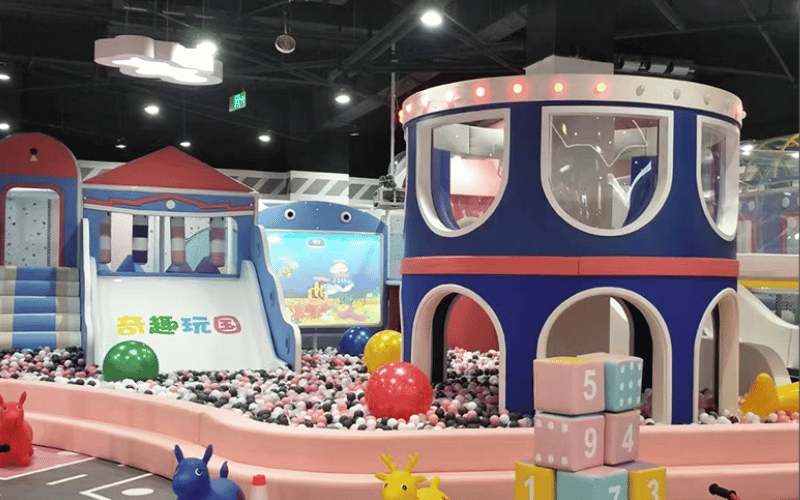The market for indoor playgrounds is experiencing rapid growth, driven by the increasing demand for family-oriented entertainment and safe, stimulating environments for children to play. This segment poses immense opportunities for new entrepreneurs, as there is still a lack of established franchises. However, great ideas are not enough: this is a highly competitive market where significant planning is essential. Having a good plan helps stake out the competitive landscape while simultaneously aiding in the venture’s structuring, obtaining funds, attracting partners, and overcoming obstacles. This guide will walk you through the steps needed to go from having a vision to building an indoor playground growing your business using a value-adding business plan.
Table of Contents
ToggleExamining the Indoor Playground Business
What Is an Indoor Playground with Its Objectives?
An indoor playground is an enclosed recreational area with equipment that allows children to play, learn, and interact with their peers while ensuring their safety. These facilities often feature a variety of play structures, interactive games, and themed areas tailored to different age groups. Unlike outdoor playgrounds, indoor play areas offer a controlled climate, making them accessible year-round regardless of weather conditions. Indoor playgrounds are designed to promote positive physical and social development through exercise, imaginative play, and collaboration in a safe environment.
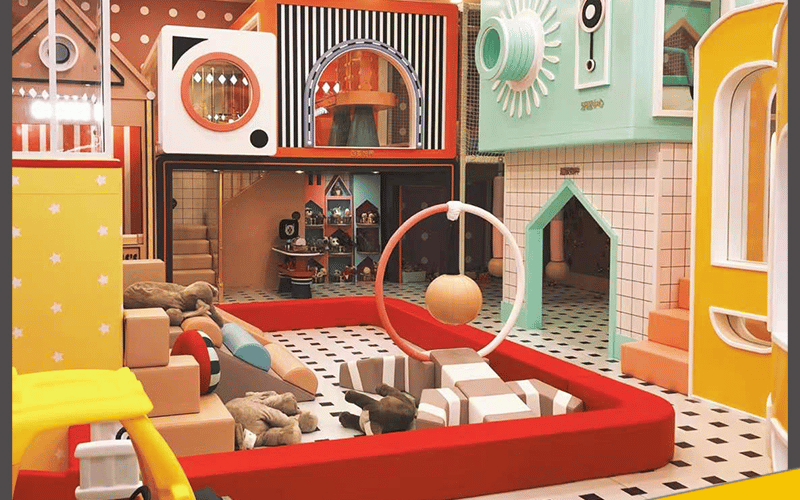
Key Trends and Innovations Shaping the Industry
New technology and changing consumer preferences are rapidly evolving the indoor playground industry. One emerging trend is the use of touchscreen play panels and augmented reality games which incorporate digital elements. Moreover, themed playgrounds like jungle or space adventure are becoming popular as they foster immersive experiences. Another noteworthy innovation is the development of all-inclusive playgrounds, designed to accommodate children of every ability and ensuring universal participation. Businesses are also focusing on eco-friendly materials and energy-efficient designs, showcasing a growing concern for sustainability.
Why Start an Indoor Playground Business?
There are several compelling reasons to consider beginning an indoor playground business. First, it connects with the increasing need for family-centric entertainment options which ensures a constant flow of prospective patrons. Another noteworthy aspect is that this business tends to be multi-faceted in its revenue generation including entrance tickets, food and beverages, and even celebration packages for children’s birthdays. To add on, indoor playgrounds offer a constructive and safe environment for children and a place for parents to socialize, thus contributing to the community. This type of business can be very rewarding personally and financially if adequately planned and implemented.
The Importance of a Business Plan in Your Success
How a plan can secure reliable funding and help streamline business activities
A concise business plan is a document that operates as a roadmap for your entrepreneurial adventure. For those seeking financial backing, in the form of investment or sponsoring from banks and other funding sources, a business plan acts as an essential tool. With it, you can showcase your understanding of the market together with the revenue model and the clear strategy of achieving profitability. A detailed map reduces risks and showcases commitment, therefore lenders and investors will always side with a venture that has such a document.
A business plan secures funds for operational sustaining and strategic guides your tactical moves. A well-set goals can be achieved including resource allocation, effective resource spending, and progress measurement over time which is equally important. The plan will address every crucial detail inclusive of the marketing aspect, operational workflows, and financial forecasts that must be aligned with long term objectives. Clarity enables adaptability and sharp focus outmaneuvering competition.
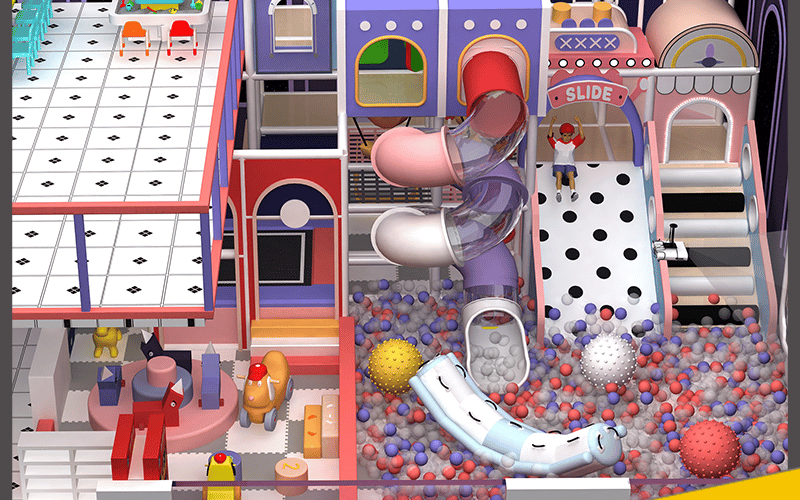
Risks of Overlooking a Business Plan
Problems may arise if a business plan is skipped or not created, including not being able to secure funding or investors as a result of lasting financial loss. A well-structured plan is needed in order to track spending and avoid resource inefficiency. Inconsistent strategies and inefficient resource management will result in loss of adaptation to market trends, unlocking neither value nor opportunities.
Risks associated with interacting with blinded entrepreneurs are covered through winning a comprehensive business plan. Covering all the components helps foster the required confidence for stepping into the market actively as well as sustainably growing while mitigating risks.
Market Research: Establishing a Reliable Base for Your Business Model
Evaluating Local Demographics and Competition
Grasping the essence of your region’s market is an integral starting point in developing a business strategy. Begin by examining the demographics of the local market, considering factors such as the total population, age segmentation, income distribution, and family structures. Such data can be vital in understanding if there is sufficient demand for your services and enables marketers to pinpoint target segments that are more likely to visit your facility. For instance, regions with an abundance of young families may offer good opportunities for indoor play centers.
Lastly, assessing your competition is equally important. Study other businesses in your area that provide similar services. Consider their pricing matrix, customer feedback, and questions like “what makes them unique?” to find gaps in the market. Such competitive analysis not only helps you differentiate your business from competitors but also reveals the dos and don’ts of your industry.
Available Tools and Resources for Conducting Effective Market Research
Today, there is an abundance of resources available for conducting thorough market research, making the process easier and more efficient. Online platforms like census databases, local government websites, and published market research reports can provide essential demographic and economic information. Social media analytics tools also allow you to research your prospective customers’ interests and shopping behavior, such as Meta’s Audience Insights.
Moreover, gathering direct feedback through surveys or focus groups with your target audience is essential for effective market research. Comprehensive understanding can be gained by asking prospective customers targeted questions regarding their preferences, pain points, and expectations. Moreover, building relationships with local business owners and community leaders can help you understand the market better.
Determining an Audience’s Pain Points and Its Relevance to Your Business Goals
Finding the right customer for your business is critical if you want to connect with your audience. Use the psychographic and demographic info you gathered to define your target market. Tailor age, lifestyle, and spending habits to build a customer avatar. For instance, an area with a large concentration of working parents may benefit from convenient drop-in play sessions or after-school programs.
Dig into the problems and pain points of the audience you curated with the first step because they matter greatly to your business. For instance, parents want a safe, clean, engaging place for their children to play while they take care of errands. Positioning enables you to align offerings with services and become the trusted community business of choice.
Step-by-Step Guide to Writing an Effective Business Plan
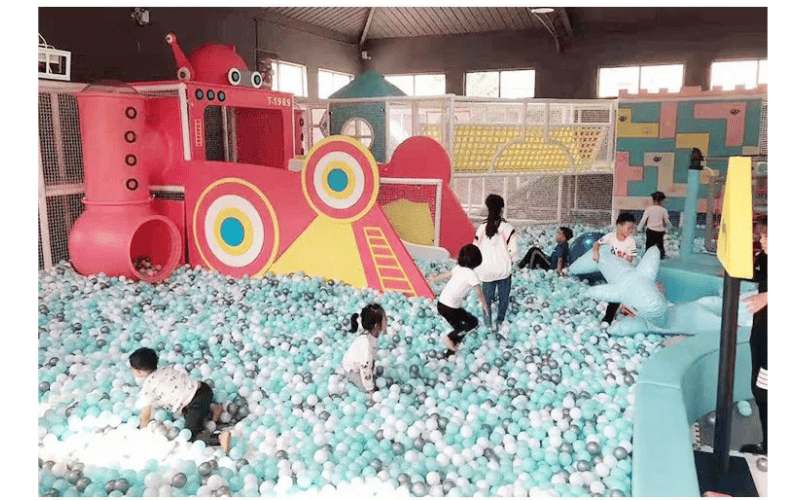
Overview – Summary: Building Engaging Synopsis Essentials
The executive summary captures the essence of your business, describes its goals and objectives, target market, and outlines what differentiates it in the market, all slated to its purpose. It is often referred to as an elevator pitch – concise yet persuasive. It should include pivotal points like the name of the business, its location, and services provided. Also, outline financial milestones that describe the business’s ambitious vision, thus captivating readers and their interest. An engaging executive summary motivates the employers to look forward for reading more of the business plan while ensuring that potential investors or partners are intrigued enough to reach out.
Business Description: Crafting Your Vision, Mission and Goals
In this section, we will delve further into the company’s identity. Outline your vision—what you seek to achieve in the future—and your mission, which explains why the business exists and the value it delivers to its customers. Formulate both your short- and long-term goals, ensuring they are clearly articulated, quantifiable, and attainable within the context of your business. As an example, one of the short-term objectives could be attaining 500 customers within the first three months, and for the long-term goal, aiming to have multiple branches within five years. This section should showcase your passion and dedication, demonstrating to the reader what motivates the business.
Market Analysis: Visualization of Research Results and Outputs
In this section, you present the research that you have done around the particular audience, industry, and competitors for your business in the form of a market analysis. Clearly, make use of facts to support your claims like demographic data, size of the market, and quantitative growth estimates. Also remember to capture primary insights, such as higher order needs (unarticulated need) in your surrounding and avenues for competitive advantage for your enterprise. For instance, assume that you have discovered the unavailability of inclusive playgrounds at recreational centers, do not shy away from explaining the business opportunity you will harness. This portion shows that you have a grasp of the market and helps build your trust on the entrepreneurial capabilities you possess.
Marketing and Sales Strategy: How Development Goals and Tasks Drive Value in the Company
A plan formed on marketing and sales should focus on engaging customers as well as raising revenue levels. Outline your approach whether it is aimed at audience engagement like social media campaigns, local partnerships, or community events. Describe what you are going to do by defining, for example, how you will use discounts for first time visitors or loyalty programs designed to increase repeat business. Also, define how you intended to frame your business in the market concentrating on your selling points. If your facility has eco-friendly play equipment, let this be one of your key unique messages. This section should elaborate on the strategic marketing masterpiece aimed at customers and brand loyalty descriptions.
Operational Plans: Daily Functional Activities and Operational Logistics
An operational plan comprehensively details the workflow processes for your business. As part of your complex vision, provide specific details on your layout, tools, equipment, personnel needed, as well as their roles, ensuring there is alignment with your business objectives. These operational policies are critical in determining the business hours, maintenance schedules, adherence to safety protocols, or any other operational outlines. If you offer additional services like workshops or party packages, elaborate on how they will be seamlessly incorporated into daily routines. This section also includes basic logistics like the management of the supply chain and relationship with vendors. An organization’s operational effectiveness greatly depends on having a proper operational plan in place.
Financial Plan: Budgeting, Revenue Streams, and Profitability Projections
A well-crafted financial plan not only serves as an indicator for the success of your business, but also, fosters trust during investor evaluations. Start by outlining your startup expenses such as equipment purchases, marketing costs, and leasing expenses. Provide your revenue streams, for instance, entrance fees, parties, and merchandise sales. Realistic financial estimations like cash flow forecasts, break-even analysis, and income statements will provide additional credibility. Disclose the risks that would threaten value and elaborate on the measures that would be taken to counter them. This text serves the purpose of instilling confidence in the finances of your business to the investors and stakeholders.
Designing the Perfect Indoor Playground
Selecting the Ideal Location and Layout
Your indoor play center’s success directly stems from selecting a proper location. Consider areas such as shopping centers, family-oriented residential areas, or locations that are adjacent to schools and, daycare centers, and are accessible on foot. Once you pinpoint a candidate location, also ensure that the venue has ample parking, is relatively easy to locate, and caters to your clientele. After establishing these parameters, focus on creating a space and zoning plan that provides sufficient divided zones for children of different ages. In addition to these designated spaces for toddlers, older children, and parents, include areas for free play, private event rooms, and caregiver seating areas where they can provide supervision and relaxation.
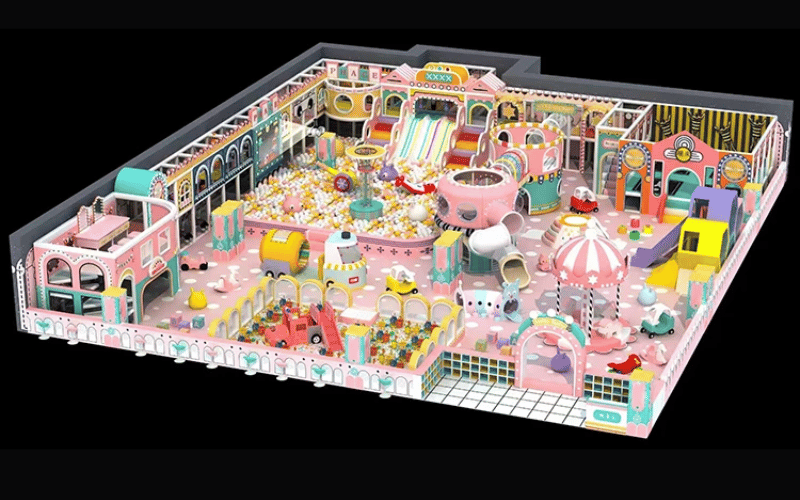
Examining Well-Known Themes And The Possibility Of Customization
Themes are crucial in designing and enhancing a memorable experience for children. Some of the most popular themes include the jungle adventure, underwater worlds, space, and fairytale castles. Picking a theme which appeals to your audience while simultaneously maintaining your brand image is essential. Customization is another approach; this could involve incorporating local culture or other distinctive traits from your community. To illustrate, a beach town could have a playground designed with beach elements while a city location could showcase urban scenery. The attractiveness of your facility could also be improved with interactive features, such as climbing walls, sensory play areas or digital games.
Balancing Aesthetics with Functionality and Safety
While having a visually engaging design is appealing, functionality and safety should always be the primary focus. Choose materials that are non-toxic but durable, easy to clean, and can withstand heavy use. All equipment should be compliant with safety regulations and routinely checked for any damage. Soft padding, Rounded edges, and secure anchoring are critical to prevent soft tissue injuries. Also, meet the needs of parents by providing comfortable seats, unobstructed sightlines, and restrooms and snack bars. Aesthetically appealing and welcoming combines striking safety and practicality. Families will appreciate and enjoy the specially designed space.
Essential Equipment and Features for a Thriving Indoor Play Space
Must-Have Attractions for an Engaging Indoor Play Area
To create a vibrant and enjoyable indoor play space, it’s essential to include a variety of attractions that cater to different age groups and interests. Here are some must-have features that form the backbone of any successful play center:
- Slides: A timeless favorite, slides come in various shapes and sizes, from straight and wavy designs to spiral and tube slides. They provide excitement and encourage physical activity, making them a staple in any play area.
- Ball Pits: Ball pits are a sensory delight for younger children, offering a safe and colorful environment for them to jump, dive, and explore. Adding features like interactive ball shooters or themed designs can make this attraction even more engaging.
- Climbing Structures: Climbing walls, nets, and multi-level play towers promote physical development and problem-solving skills. These structures encourage kids to test their limits while having fun, making them a key component of any indoor playground.
- Obstacle Courses: These versatile setups can include tunnels, balance beams, and foam hurdles, providing a mix of physical challenges and imaginative play. Obstacle courses are especially popular for group activities and birthday parties.
- Soft Play Areas: Designed for toddlers and younger children, soft play zones feature padded equipment, foam blocks, and low-level structures to ensure safety while fostering exploration and creativity.
By incorporating these essential attractions, you can create a well-rounded play environment that keeps children entertained and engaged while promoting physical and social development.
Guidelines for Obtaining Durable and High-Quality Equipment
Acquiring quality equipment is critical to ensure safety and long-term cost implications. When sourcing for play structures, select vendors who have a history of making certified and child-safe products. Check for wear and tear resistant, easy-to-clean, non-toxic materials. Also, non-safety compromising heavy use endurance is critical. To safeguard your investment, request warranties and ongoing maintenance support from your suppliers. Additionally, customizing to suit your theme and space needs is more efficient than generic bulk purchasing, so manufacturers that provide such options are preferable.
Supplement with Playful Digital Technologies
Integration of fun and educational digital games will definitely attract modern kids. For the digital-savvy younger generation, new tools offer engaging experiences beyond conventional play, including augmented reality games and touch screens. Other musical innovations such as sensor walls and play panels, as well as kinetic sand stations, offer engaging opportunities for children to stimulate their imagination. To appeal to older kids, you might add physical challenges like climbing walls, zip lines, and ninja-style obstacle courses. The result is a modern environment that combines traditional entertainment with advanced technology for people of all age groups.
Safeguarding Risks and Ensuring Compliance in Your Indoor Playground
What Are the Key Safety Standards and Regulations to Follow
Maintaining safety standards and regulations will determine the success and safety of an indoor play facility. Start with localized regulations such as the Consumer Product Safety Commission (CPSC) for playgrounds and similar institutions. These considerations include equipment installation, fire safety, and emergency exits. All play equipment structures should be certified and built from non-toxic materials and plastics. Regular inspections, safety assessments, and maintenance schedules aid in the identified and rectification of hazards that could arise due to loose bolts, padding wear and tear, among others. Compliance with the regulations will also increase safety for customers and reduce liabilities for the business.
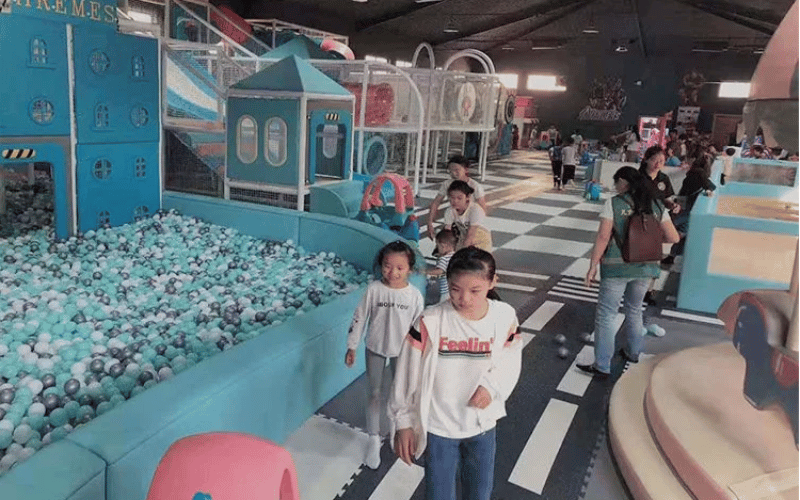
Designing a Secure and Child-Friendly Environment
Creating environment that is welcoming extends beyond meeting the requirements of the law. Regulatory requirements, and providing parents and staff working at your establishment clear sightlines to easily monitor children at all times while using soft flooring materials like foam or rubber to cushion falls and lower the chances of injuries. Make sure that there are age appropriate zoning to restrict younger children from older children’s spaces. In addition to safety gates, all equipment should be safety rounded edged and structurally anchored to eliminate participation injuries. Signage and lighting also plays an important role in safety while providing navigation for caregivers and children. A good design enhances the first interactions with caregivers builds trust that fosters repeat visitation.
Staff Training and Emergency Preparedness
Employees are an essential facet of maintaining safety within an organization. Therefore, a comprehensive training regimen is critical to empowering and equipping staff with protective skills and knowledge pertaining to the proper use of equipment, enforcement of safety regulations, and management of minor injuries. All personnel should be certified in First Aid and CPR, thereby allowing them to react appropriately during emergencies. There should be a well-defined emergency action plan that addresses evacuation procedures, medical incidents, and procedures for missing children. Routine refresher training improves preparedness and confidence among the staff. Encouraging thorough training fosters a culture of safety that is reassuring to parents and employees.
Marketing and Branding Techniques to Boost Your Indoor Amusement Center
Creating a Positionable Brand
Branding is integral to any business as it sets you apart from competitors, and thus, it should be executed well. Branding begins with creating a logo that represents the brand well, in your case, a logo that embodies the fun and family-friendly concept of the indoor play center. Use related fonts and colors that inspire trust, vitality, and creativity. Follow with the creation of a responsive website with service listing, pricing, and distinct features showcased alongside relevant images. The website’s navigation should be intuitive, with prompts such as booking a party or purchasing tickets. Equally as important is your presence on social media; use Instagram and Facebook to distribute audience-captivating content, including behind-the-scenes clips, special offers, and customer stories. All branding elements should be aligned to strengthen brand memorability and to ensure that the business stands out.Developing Appealing Marketing Techniques
A combination of traditional and digital marketing methods will help you draw in and retain customers. Remember to employ local advertising techniques such as flyers, billboards, or the sponsoring of community events to reach families in your vicinity. Digital advertising like Google Ads or social media promotions help you reach specific demographics and track results in real-time. Partnering with local schools, daycare centers, and family-oriented retailers can also aid in broadening your reach. These partnerships can include exclusive discounts for their customers or hosting joint events. Seasonal promotions, loyalty programs, and referral incentives also help engage the audience and retain their patronage.
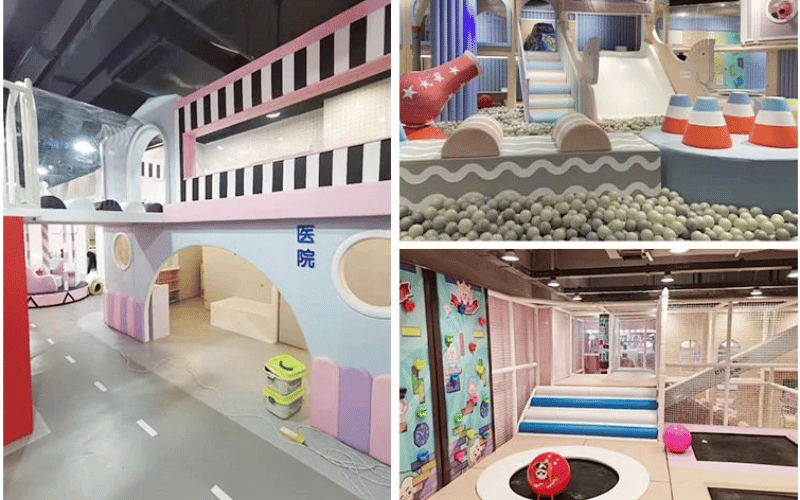
Harnessing the Power of Customer Reviews and Testimonials
The impact reviews and testimonials can have on reputation, trust, and credibility cannot be overstated. Make sure that your customers are actively able to leave feedback on Google, Yelp, and Facebook. Consider making the process seamless by using direct links or QR codes that lead to your review pages. Use the testimonials provided by customers on social media and your websites so that prospective customers can see the experiences of happy families. Thanking clients for their feedback, regardless of whether it is positive or negative, demonstrates an organization’s willingness to improve and take customer suggestions seriously. Your indoor play center can be greatly aided in reputation and new customers by utilizing customer feedback.
Your Indoor Play Business: Growth and Maintenance Strategies
Hygiene and Maintenance Standards in Your Business
Achieving a meticulously clean and safe space is pivotal for the success of your indoor play facility. Formulate a thorough cleaning protocol that incorporates regular sanitization of high-touch areas, like the play equipment, seating areas, and restrooms. Children’s safety while visiting is assured by using non-toxic and child-friendly cleaning products. Schedule systematic inspections for all play structures and safety features to capture and mitigate any detected issues of wear and tear. In addition, ensure that all your staff is trained to observe as well as act to any raised concerns regarding cleanliness. A properly maintained indoor facility improves customer experience and builds trust and loyalty, especially among families.
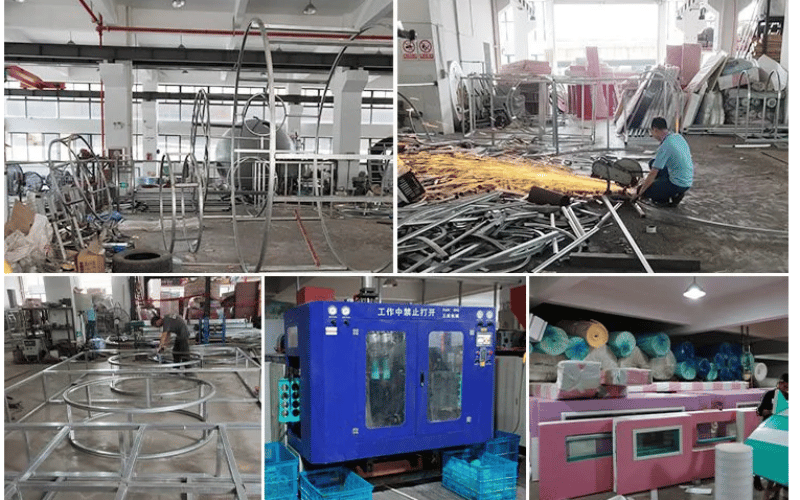
Broadening Services to Build Additional Revenue Streams
To enhance business growth, consider offering new services that appeal to your audience. Catering to birthday parties is an extremely profitable option because it allows families to celebrate special occasions without any planning hassle. To attract different budgets, offer customizable packages with varying levels of included decorations, catering, and entertainment. Additional services, such as a snack bar or café, can improve the overall experience, giving parents a comfortable place to unwind while children are occupied. Another opportunity to increase revenue while also marketing your brand is through the sale of branded merchandise like T-shirts, toys, or water bottles. Broadening your offerings not only captures new customers, but also encourages repeat visits.
Using Customer Feedback for Ongoing Development
Feedback from customers helps in tracking and improving the areas of concern and staying aligned with their expectations. You can capture perceptions through surveys, reviews, and conversations held with the customers. Look out for common themes that may include the addition of features, longer operational hours, or better services. Make appropriate changes that address the customer’s concerns, inform them of the updates made, and Ongoing feedback informs strategy. Ongoing feedback informs strategy. In doing so, open dialogues will allow you to further tailor offerings while enhancing customer loyalty and satisfaction.
Case Studies and Success Stories: Insights from Thriving Indoor Playgrounds
Real-Life Examples of Successful Indoor Play Centers
A notable example of an indoor playground that continues to thrive is Kidtopia Playland, a family-run business that gained popularity in the community. Located in the suburbs, Kidtopia set out to provide an experience unlike any other by designing the playground with jungle themes and including climbing walls, sensory play zones, and other interactive games. As part of their customer retention strategy, they’ve developed themed playdates and holiday parties which has contributed to their awarded customer loyalty. Their focus on cleanliness, rigorous safety measures, and high-quality customer service have reported them outstanding reviews and return visits, reinforcing their success.
Another inspiring story is Play Haven, originally a single-location indoor playcenter in a small town, now operating multiple locations. What set them apart was the introduction of flexible membership packages and an extensive activity menu, which included parent-child yoga classes and other educational workshops. They also partnered with local schools and community organizations to host fundraisers and special events which helped them become an integral part of the community. Their innovation, responsiveness to customer feedback, and ability to adapt have helped them sustain strong reputation in the new markets they enter.
Tips And Lessons Learned From Industry Influencers
Understanding one’s audience is a critical aspect of nie building emphasized by successful indoor playground proprietors. For one, Kidtopia’s founders credit their success to local family centric offerings such as toddler zones and parent seating areas. They also reinforced the need to spend on quality equipment that reduces safety hazards and maintenance costs.
From a management perspective, community relations, which focuses on outreach in collaboration to local businesses and schools, is a key aspect of visibility and trust for the brand. Through these partnerships, not only have they fostered sustained word-of-mouth advertising but also built community that stands the test of time. Moreover, as recommended by them, having an open-minded approach towards business can work wonders.
Both latter firms bandhishows share a common understanding and weightage to excellent customer relations. Having trained attending personnel further enhances brand loyalty for families and businesses, ensuring they never stop returning. A thorough compilation of basic principles, brand innovation, and community relations mark the turning point for every indoor playground franchise starter.
FAQs: Common Questions About Starting an Indoor Playground Business
Q: What is the initial investment required to start an indoor playground?
A: The initial investment can vary widely depending on factors like location, size, and the type of equipment you choose. On average, costs can range from $100,000 to $500,000, including expenses for leasing, equipment, insurance, and marketing. Conducting a detailed financial plan will help you estimate your specific startup costs.
Q: How do I choose the best location for my indoor playground?
A: Look for areas with high foot traffic, such as shopping centers, family-friendly neighborhoods, or near schools and daycare facilities. Ensure the location is easily accessible, has ample parking, and aligns with your target audience’s needs. Conducting a market analysis can help identify the most suitable spot.
Q: What safety measures should I implement in my indoor playground?
A: Safety is paramount. Use non-toxic, durable materials for equipment, install soft flooring, and ensure all play structures meet safety standards. Regular inspections, proper maintenance, and clear age-appropriate zones are essential. Additionally, train staff in first aid and emergency procedures to handle any incidents effectively.
Q: How can I attract customers to my indoor playground?
A: A mix of marketing strategies works best. Use social media to share engaging content, run local advertising campaigns, and partner with nearby schools or businesses. Hosting events like themed playdates or birthday parties can also draw in families. Positive customer reviews and word-of-mouth referrals are powerful tools for attracting new visitors.
Q: What additional services can I offer to increase revenue?
A: Expanding your offerings can boost income and enhance the customer experience. Consider hosting birthday parties, adding a snack bar or café, and selling branded merchandise. You could also introduce educational workshops, seasonal events, or membership programs to encourage repeat visits.
Q: How do I handle customer feedback and complaints?
A: Actively listen to customer feedback through surveys, reviews, and in-person conversations. Address complaints promptly and professionally, showing that you value their input. Use recurring suggestions to make improvements and communicate these changes to your audience to build trust and loyalty.
Q: Do I need any special permits or licenses to open an indoor playground?
A: Yes, you’ll likely need permits and licenses depending on your location. These may include a business license, health and safety certifications, and liability insurance. Check with your local government or a legal advisor to ensure you meet all regulatory requirements before opening.
Conclusion
Building a successful indoor playground business requires careful planning, from conducting thorough market research and designing a safe, engaging space to implementing effective marketing strategies and maintaining high standards of cleanliness and customer service. By focusing on these key elements and learning from industry success stories, you can create a thriving business that brings joy to families in your community. Now is the perfect time to take the first step—start planning your vision, and turn your dream into a reality!




